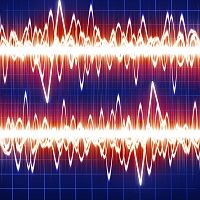Status Epilepticus: New Aggressive Guidelines Issued
Physicians need to be more aggressive in treating status epilepticus, prolonged seizures lasting 30 minutes, according to a new guideline from the American Epilepsy Society. Nearly a third of patients who experience this condition die.

Status epilepticus, a form of continuous seizures or sequential seizures lasting more than 30 minutes, has a mortality rate of 30 percent for adults.
To reduce the number of deaths and potential brain damage, the American Epilepsy Society has developed a new guideline for the most effective treatment.
“In treating status epilepticus, there is overriding urgency to stop seizures before the 30-minute mark when seizure-associated neurologic injury can occur, " said Shlomo Shinnar MD, PhD, one of the guideline’s authors and a professor in the departments of neurology, pediatrics, and epidemiology and population health at the Albert Einstein College of Medicine.
"This guideline supports an aggressive approach to treating status epilepticus and seeks to bring some structure to what can often be a chaotic and dire medical situation,” Shinnar wrote.
About two to three million people in the U.S. have epilepsy and about 15% of them experience status epilepticus, according to the National Organization for Rare Disorders.
Shinnar and his colleagues found that treatment of convulsant status epilepticus, the condition’s most common form, can vary widely.
The result is that treatment often is inadequate for reasons such as focusing on reducing instead of terminating seizures, administering insufficient anticonvulsant doses, or using inefficient approaches like sedatives and paralytics, they said.
Instead, the team recommended following a four-step algorithm based on a timeline from zero to 60 minutes.
The first five minutes are devoted to standard emergency room care. If the seizures continue, at the critical five to 20 minute period, it’s time for one of three first-line benzodiazepines: intramuscular midazolam, intervenous lorazepam, or intravenous diazepam.
At the second stage (20-40 minutes) if the convulsions continue, the guideline recommends three different drugs and if they aren’t available intravenous phenobarbital.
For the last stage (40 to 60 minutes), the guideline noted the options of repeating the second stage or using anesthetic doses of one of four different medications. The guidelines apply to an age range from infants to the elderly.
Potential adverse events as a result of treatment were respiratory and cardiac symptoms in adults. In children, respiratory depression was the most important risk but less than in adults, the guideline explained. Children also have an estimated mortality rate of less than three percent, the authors added.
Shinnar and colleagues developed the evidence-based guideline using a literature search and analysis of televant studies published from January 1940 through September 2014.
The guideline could “change the approach many clinicians take in treating these seizure emergencies,” said co-author Tracy Glauser MD, director the Cincinnati Children’s Hospital Medical Center’s Comprehensive Epilepsy Center.
The American Epilepsy Society published the guideline in the January/February issue of Epilepsy Currents.